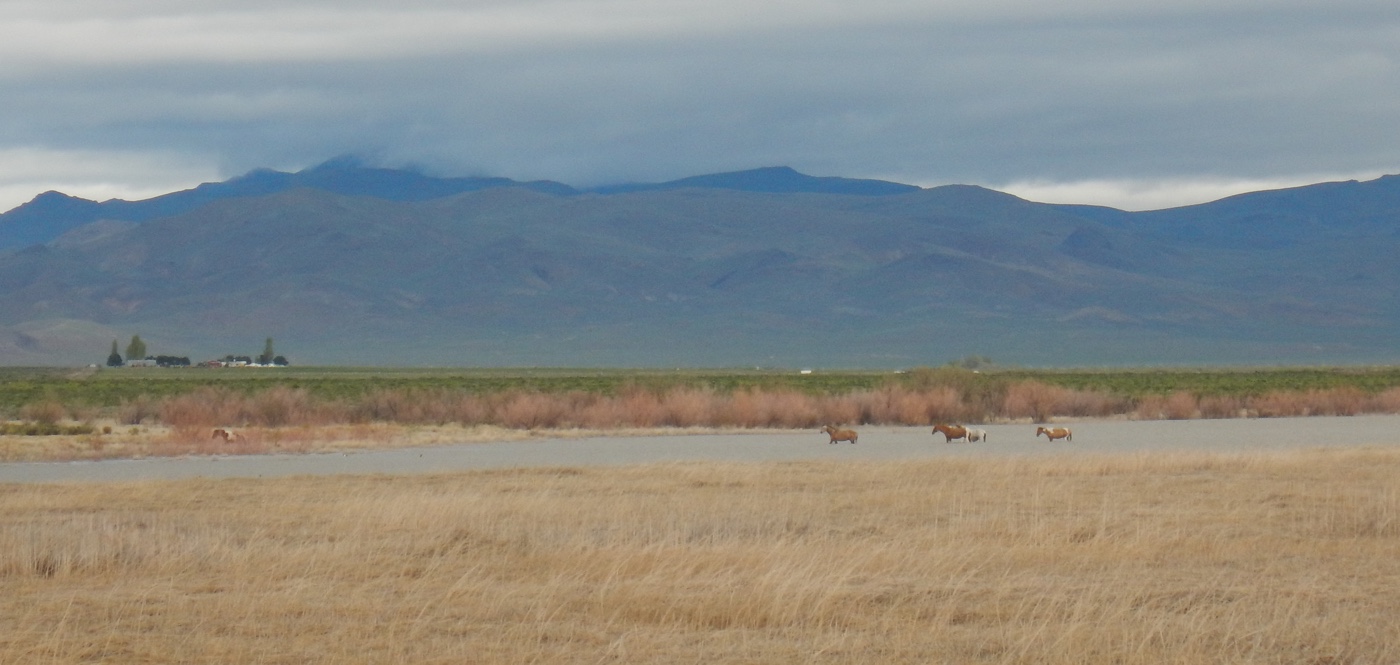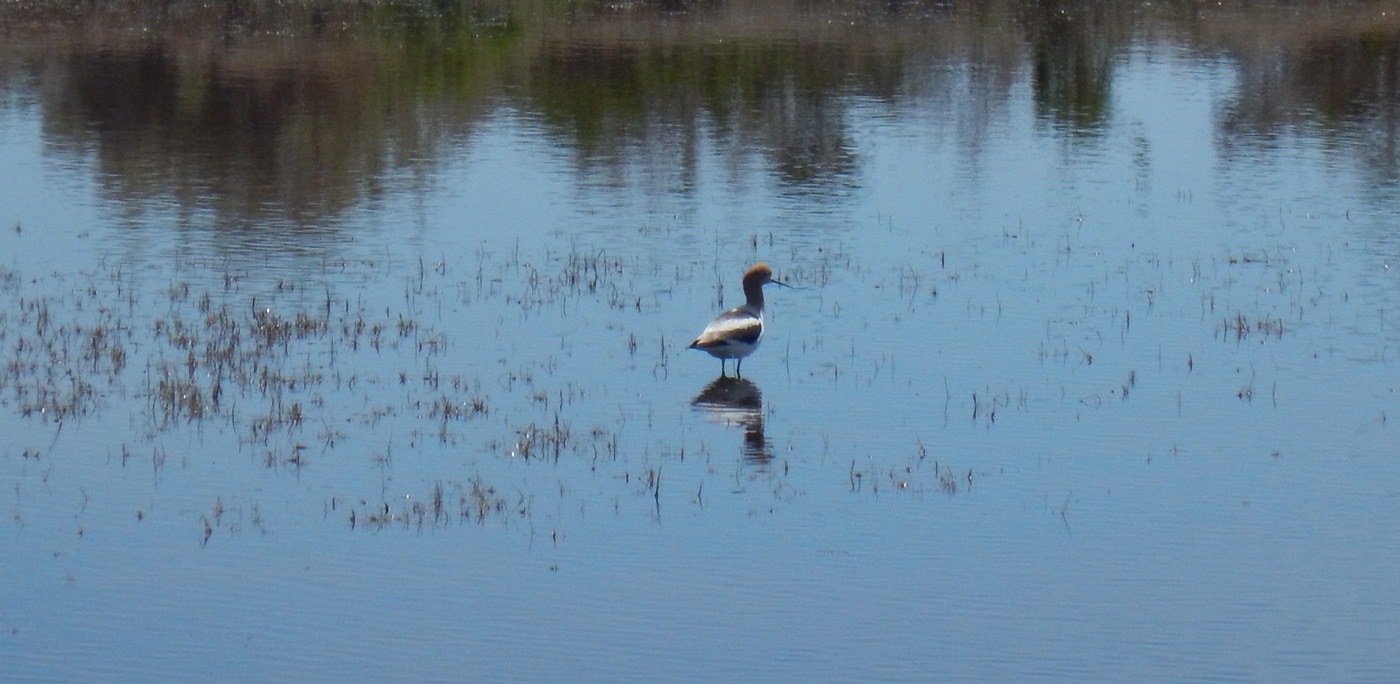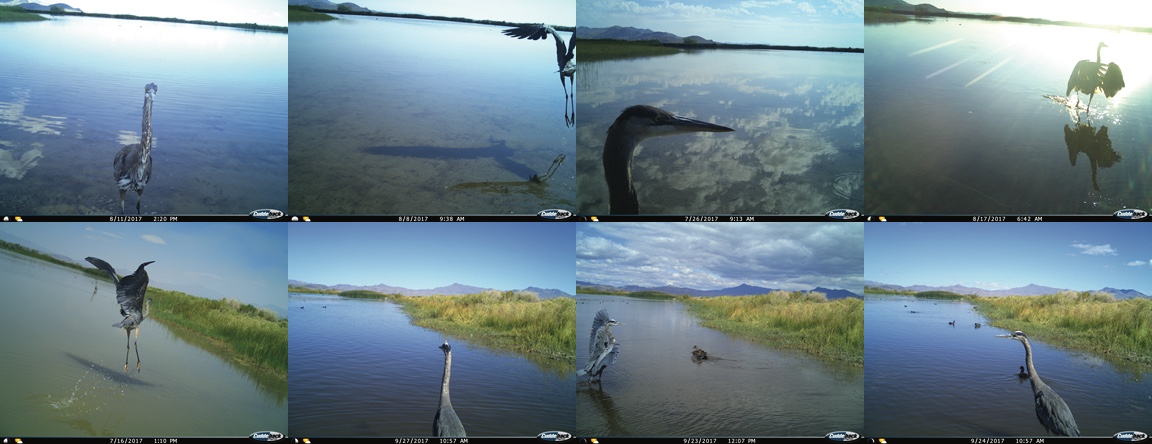
Making Sense of Fly Ranch — #1: Touch
August 9, 2017Visiting Fly Ranch: Idea Roundup
April 12, 2018In this five-part blog series, Burning Man Project Land Fellow, Lisa Schile-Beers (a.k.a. Scirpus), will share the ecological survey work she is doing on Fly Ranch by using touch, taste, smell, sound and sight to frame her findings and guide you around the property. Burning Man’s Fellows program is an investment in people, leadership and innovation, and Lisa is the third Burning Man Fellow since 2015.
The majority of sound I heard in and around the Black Rock Desert prior to starting my fellowship was that of wind — constant, relentless wind. A good friend of mine, fellow Burning Man Fellow, Tony “Coyote” Perez-Banuet, told me a story of a woman who lived in the Granite mountain range, which skirts the southern and western edges of the Hualapai Valley that is home of Fly Ranch. She mostly kept to herself. When she hadn’t been seen for a while, someone went to her cottage and found her hanging, dead, with a note safety pinned to the front of her dress that read: “It was the wind—it was the wind—it was the wind”. Although I knew a similar ending wouldn’t result for me, I intently paid attention for sounds other than the wind to fill my ears when I moved to the Hualapai Valley in April. What I’ve heard at Fly Ranch is beyond what I ever imagined.
With a year-round water source at Fly Ranch, a suite of species occurs that would be hard-pressed to find comfort in a typical dry desert environment. From dusk to dawn in late spring, an entire chorus of frogs erupts, with Pacific chorus frogs leading the orchestra and bullfrogs providing the bass. If you stand in just the right spot, you encounter a complete surround-sound experience of amphibian song. Staring up at the Milky Way, it honestly brought me to tears when I heard it for the first time. This property never ceases to amaze me.
There also is a negative side to all the (mostly) still water — mosquitoes. I have not experienced mosquitoes this thick and this large anywhere I’ve been before, including mangroves in Central America. And I don’t think Nevada’s historically wet season last winter helped to curb their population. At certain times of the day near Fly reservoir, when they weren’t aggressively biting, they swarm just above your head and create a thick layer of high pitched wing-beating that sounds like an armada of tiny drones. It is amazing how this sound triggers an innate defense response where you won’t back down until the enemy has been conquered, even if they could care less that you’re there.
At dawn and dusk, it’s a different story, and this armada goes on the hunt; there is no respite except for inside of a car, a trailer, or off the property altogether. One night, there were at least 100 of them relentlessly clinging on my trailer screen door, holding me hostage for well over two hours. Many times at dusk, I would see the wild horses near belly deep in reservoir water in what I interpreted as a strategic yet feeble attempt to seek refuge from the mosquitoes. I wondered if they also had the visceral response to attack, or just made do with the constant swinging of their tails.

Lest we not forget the other melodic insects on Fly Ranch — cicadas and crickets. Oddly, I was surprised to hear cicadas in the desert, even though I remember hearing them as a kid when I spent time in Arizona. At first, there were only one or two buzzing amongst the sagebrush and rabbitbrush, and it took me a couple of days to truly register that they were cicadas. And then, almost overnight, they were out in full force. There were so many of them at times, I wished I had earplugs. They were gone almost as quickly as they emerged, leaving only their translucent shells that they shed just a few weeks earlier, clinging to stems.
As the days get shorter and temperature cools down, the dominant insect sound is of crickets peppered amongst the shrubs. They aren’t as loud or as pervasive as their cicada relatives, but their sweet, steady rhythm both day and night are calming and regenerative to me.
Birds
Before I awkwardly yet intrepidly entered the world of bird identification for this fellowship (note: I’m a botanist at heart), I named birds either by the plant I most commonly saw them on or by their calls — I know, it’s a very accurate, repeatable and effective technique. The most familiar bird to me from my work in San Francisco Bay wetlands was the “bleep bleep” bird, a long-legged, vocal shorebird with brilliant orange-red colors during mating season. After being corrected by an ornithologist politely holding back a laugh, I now know it as the American avocet. Within the first week of being at Fly Ranch, I saw over 40 avocets in the Hualapai playa lake and found it surprisingly comforting — I at least was going to know one bird! I’ve come a long way in nearly six months, though, identifying over 70 species with more to come as the winter migrations occur and I get better at identification.

Nevada falls along the what’s called the Pacific Flyover, a path many migratory birds follow as they cyclically move from North to South year after year. Many of the birds are drawn to the large water bodies in the Hualapai valley, most of which are on Fly Ranch. Some species such as the long-billed curlew, Bullock’s oriole, and Swainson’s hawk breed here and fly to Central America and beyond for the winter. Others, like the greater yellowlegs and great egret stop at Fly Ranch briefly on their migration, which can end as far south as Argentina. Although they nest in great numbers at Pyramid Lake, the noble American white pelican visits Fly’s reservoirs from time to time throughout the summer to feed, reminding me that birds indeed are descended from dinosaurs.
One of the benefits of having motion activated cameras, a.k.a. “critter cams”, placed strategically on the property is that they’re able to take the candid bird photos I’m either too slow or clumsy to capture sometimes. I don’t get to hear them through this method, but the critter cams have been exceptionally helpful with identifying the ducks, which have been my biggest hurdle. I also learned that the great blue heron is quite fond of the camera and poses regularly while hunting for fish.

Some of the noisiest birds on the property are the Canada geese, ravens, American avocets, tundra swans, and killdeer (nerd fact — its scientific name is Charadrius vociferous — I wonder how it got its name…). Actually, now that I think about it, most birds on the property are quite vocal, especially if you inadvertently end up near a nest. One morning in June, I was walking around one of the last unexplored areas near the Hualapai playa and got “screeched”, “bleeped”, “barked” and “kecked” at by curlews, avocets, short-eared owls, and red-winged blackbirds, respectively. Swiftly walking away from one upset bird got me into the territory of another. The nesting golden eagle and Swainson’s hawk I also saw that day didn’t say anything though. I soon learned that a lot of the property would be temporarily off-limits due to nesting birds. On the southern portion of Fly, red-tailed hawks, burrowing owls, and black-billed orioles set up shop. Along the edges of the reservoirs, many species of ducks and the Canada geese reared their young.

There are also many small and chatty birds on Fly, many of which are year-round residents. Fly Ranch is definitely not lacking in sparrows — I’ve seen song, sagebrush, savannah, vesper, lark, house, and white-crowned sparrows, and I’m sure I’m missing 10 more. The marsh wren, another of my few but familiar birds from San Francisco Bay, is common in and around the wetlands and has no shortage of calls and chirps to make.
With the abundant wetlands on the property, another suite of birds is present, including a few elusive ones. The sora, which has the most haunting calls I’ve ever heard, is rarely seen, but I was lucky enough to spot one at the edge of Fly reservoir. The even more elusive Virginia rail, usually only identified when it calls, skirted along the wetland edge in September and allowed me the chance to grab a rare video. Although I haven’t heard one call at Fly, I found a slightly creepy looking juvenile black-crowned night heron fishing along the drainage ditch.
I get the impression speaking to avian enthusiasts in my life that Fly Ranch could be a considered a birder’s paradise. I’m beginning to think so myself as I observe them every day and know who is where by the chirps, screeching, squacks, and quacks they make.
Mammals
Before spending time at Fly, I never had any experiences with coyotes save for hearing a few howling in the distance in the San Francisco Bay Delta. That definitely has changed since being here — they are almost as common as sparrows. This summer, I heard three distinct large packs on the property, howling all at once as the sun was beginning to set. There were quite a few pups in the packs, so the stereotypical howls were mixed with awkward yips akin to cracking voices of 11-year-old boys. The coyotes are not the slightest bit shy and will get within 50 feet of me to hunt a rabbit or drink water from a reservoir. I can always tell when one is getting close to the water at night when the Canada geese start to honk incessantly and the ducks quietly take flight en masse.

Other regular inhabitants of Fly include wild horses, pronghorn antelope, and mule deer. For the most part, the horses are quiet save for a snort or a stomp. In July, however, I was close to the southernmost reservoir when a herd came running up out of nowhere to protect their water source from me. I made myself look big and held my ground, and eventually they realized I was no threat and walked away. The activity brought in other horses to reservoir, and a loud confrontation ensued
The mule deer are mostly quiet as well, except for when I unintentionally get close to a fawn. The doe makes the oddest snorting sound as she jumps high and almost always 90 degrees in the air. The fawn never makes a sound, and it’s usually me who yelps when it flushes from almost below my feet. I have yet to hear a sound from the antelope, however, even when they run. I find them to be the most inquisitive, observant, and at times flirty animals out here. I feel like there’s a lot to learn from those who listen more than they speak.
After spending nearly six months on Fly Ranch, I feel at home with the soundscape, and I miss it when I’m not around. I also truly appreciate the lack of sound that you can experience here and the ability to truly turn everything off and just be. Silence is not necessarily uncommon, and I have become more aware and grateful than ever when I encounter it. It is becoming an increasingly rare opportunity to enjoy silence in our modern world, as is the ability to choose what fills your ears… or doesn’t.
Top photo by Scirpus
